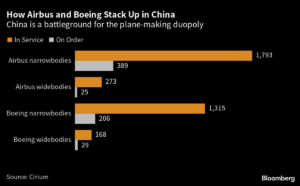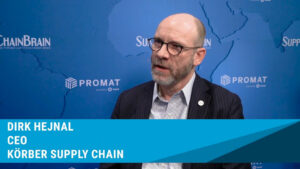
Post-COVID-19 supply/demand chaos is easing, but the omnichannel fulfillment challenges it leaves behind are ongoing. Companies planning longer-term fulfillment strategies for growth and resilience will need direction in reaching "order and delivery excellence," allowing them to move beyond siloed operations, integrate new technology, perfect information-sharing and collaboration internally and with outside partners, and drive continuous improvement.
Here are the five milestones, and the hurdles involved, to achieving fulfillment and final mile maturity:
1 Think Holistically. Break Down Organizational Silos.
In most businesses, digital maturity is fragmented. Manufacturers or retailers are dealing with siloed divisions and multiple supply chains built over time and segmented by region, business unit, product line, shipment priority or other characteristics. In addition, as third-party logistics providers (3PLs) are on a shoestring budget, they are manually entering order data or importing online marketplace files into carrier-provided shipping software.
“It’s what we call the ‘just get stuff done and out the door stage,'” says Mike Graves, vice president product management with Pierbridge, provider of Transtream multi-carrier management software, part of the WiseTech Global Group. “Little or nothing is integrated or optimized. You finally realize that you can’t live in that state and continue to grow and scale and be profitable for very long and recognize the need to break down internal silos and remove manual data entry to enable greater efficiency.”
2 Integrate Technology to Boost Efficiencies
Organizations begin standardizing data and moving from manual entry at each step, to one-time entry and data integration, into a single, real-time view of order, inventory and shipment data.
Integration breaks down divisional information silos to eliminate duplication, leverage aggregate volume, and reconfigure routes, loads and asset utilization. The technology and process changes are supported by clear communication about the cultural changes required to break down existing silos so that the whole organization can benefit.
Shippers can now comparison shop for, negotiate with and manage multiple carriers. They begin to sequence and automate warehouse pick and pack, and introduce triggered replenishment, batch-print labels and use handheld devices.
“You start to know your overall inventory costs, replenishment rates and have pick accuracy,” Graves explains. “You can start reshuffling the warehouse at high volume, making those resources more efficient, so you can handle more demand without adding new people and square footage.”
3 Perfect within the Organization First
Here the business fine-tunes operations and processes in preparation for expanding. Automation and optimization software is deployed and integrated with order, warehouse and transportation management systems. Internal functional and divisional silos have been removed, and a steady real-time data stream is accessible and shareable across the enterprise.
Visibility and focus on the entire order cycle fill in previous reporting gaps. Sharing of data and a single source of truth generates granular operational detail for a clear picture of cycle times and cost-to-serve.
Automated pick and pack dynamically prioritizes orders, manages exceptions and determines optimal cartonization and parcel charges. Inventory can be tracked throughout the system and retrieved from multiple facilities, reducing stockouts and closing the shipping distance to the customer doorstep. Customer support for orders and returns is integrated and automated.
Real-time rating tools more efficiently determine shipping quotes. Control tower views of carrier performance against defined KPIs and comparative breakdowns of charges enable carrier selection with configurable instructions. “Perfect orders” — the right product, packed properly, arriving undamaged, on time or early, at the right cost, with a frictionless return experience — gradually become standard.
4 Collaborate and Expand Beyond the Organizational Walls
Once internal operations, processes and the right technology are in place and functioning optimally, resulting efficiencies set the table for deepening relationships with suppliers, carriers, logistics vendors, partners and sales channels. Collaboration opportunities, from process improvements and demand forecasting to product redesign to joint investment, replace adversarial negotiations and finger pointing.
A company can diversify supplier and carrier selection to manage risk and utilize flexible inventory minimums and maximums to increase sell-through rates and cut inventory carrying costs. With added visibility, it can ship from a transparent “endless aisle” of stores, distribution centers, suppliers and 3PLs, to nearly eliminate stockouts.
Finally, the company can build “shipper of choice” relationships with carriers, offering desirable freight and managing to carrier agreements for pickup times, daily volume commitments and maximizing shipment density, in exchange for rate discounts.
5 Orchestrate and Optimize Continuous Improvement
This is where the fun begins, instead of striving for best practices, you are setting them. Orders are perfect, or close to it. The supply chain, in most cases, is global, supported by state-of-the-art automated warehousing and intermodal carrier networks.
Leadership has budgeted time, resources and assets for continuous improvement in resiliency and agility. The business delivers a winning customer experience and is adapting to change. It is no longer just about cutting costs, but also about opening new markets, developing new channels and adding value through new products and services.
ROI is reinvested in continuous improvement, integrating artificial intelligence and machine learning for dynamic planning and modeling, optimization instructions to further automate processes, and robotics to augment human performance.
Most companies, especially smaller, less diversified ones, reach their desired maturity at the third or fourth milestones. What’s important, Graves cautions, is to be clear on the set of problems to be solved and not overreach. “You don’t just swing for the fences,” he says. “You take things in bite-sized chunks, taking ROI as you go. That way you’ll have the platforms and systems (and funding) you need in place when you’re ready.”
Pierbridge/Transtream Charts a Path to Digital Maturity
Pierbridge is a leading multi-carrier parcel shipping software provider. Its Transtream cloud-based SaaS platform provides an enterprise-class, multi-carrier, parcel-shipping solution that integrates carrier selection, booking, label printing, tracking, invoice reconciliation and business intelligence reporting.
In 2018, the company became part of WiseTech Global, developer of the CargoWise supply chain platform. Transtream is part of the CargoWise Parcel solution area.
Pierbridge, working with sister company, Microlistics WMS, developed the Fulfillment and Final-Mile Maturity Model to provide guidance to companies in, or adapting to, the complex, technology-dependent omnichannel, direct-to-consumer fulfillment environment, which now accounts for 20% of retail shipments, with 9% annual growth worldwide and 11% growth in the U.S. forecast through 2027.
The model complements others in the marketplace, guiding businesses of all sizes and types as they benchmark their current state against the maturity needed to achieve strategic objectives. This involves implementing scalable, flexible processes and systems to optimize performance, enhance customer experience, and respond to operational threats and market opportunities. All done while pacing maturity growth and spend to preserve margins and working capital
Resource Link: www.pierbridge.com
- SEO Powered Content & PR Distribution. Get Amplified Today.
- PlatoData.Network Vertical Generative Ai. Empower Yourself. Access Here.
- PlatoAiStream. Web3 Intelligence. Knowledge Amplified. Access Here.
- PlatoESG. Carbon, CleanTech, Energy, Environment, Solar, Waste Management. Access Here.
- PlatoHealth. Biotech and Clinical Trials Intelligence. Access Here.
- Source: https://www.supplychainbrain.com/articles/38827-five-stops-on-a-road-map-to-the-perfect-order
- :has
- :is
- :not
- :where
- 2018
- a
- About
- accessible
- Accounts
- accuracy
- Achieve
- achieving
- across
- added
- adding
- addition
- adversarial
- against
- aggregate
- agreements
- All
- Allowing
- also
- an
- and
- annual
- ARE
- AREA
- arriving
- artificial
- artificial intelligence
- Artificial Intelligence and Machine Learning
- AS
- asset
- Assets
- At
- augment
- automate
- Automated
- Automation
- BE
- became
- become
- been
- begin
- behind
- Benchmark
- benefit
- BEST
- best practices
- Beyond
- booking
- boost
- Break
- breaks
- budget
- budgeted
- build
- built
- business
- business intelligence
- businesses
- but
- by
- call
- CAN
- carriers
- carrying
- cases
- cautions
- Centers
- chain
- chains
- challenges
- change
- Changes
- channels
- Chaos
- characteristics
- charges
- Charts
- clear
- Close
- closing
- collaborate
- collaboration
- commitments
- Communication
- Companies
- company
- comparison
- complex
- continue
- continuous
- control
- Control Tower
- Cost
- Costs
- cultural
- Current
- Current state
- customer
- customer experience
- Customer Support
- Cut
- cutting
- cycle
- daily
- data
- data entry
- data integration
- dealing
- defined
- delivers
- delivery
- Demand
- Demand forecasting
- density
- deployed
- desired
- detail
- Determine
- determines
- developed
- Developer
- developing
- Devices
- digital
- direction
- discounts
- distance
- distribution
- diversified
- diversify
- done
- Dont
- Door
- down
- drive
- dynamic
- dynamically
- each
- Early
- easing
- efficiencies
- efficiency
- efficient
- efficiently
- eliminate
- enable
- enhance
- entering
- Enterprise
- Entire
- entry
- Environment
- especially
- Ether (ETH)
- Excellence
- exchange
- existing
- Expand
- expanding
- experience
- Explains
- facilities
- Files
- fill
- final
- Finally
- finger
- five
- flexible
- Focus
- For
- Forecast
- Fourth
- fragmented
- freight
- frictionless
- from
- fulfillment
- fun
- functional
- functioning
- funding
- further
- gaps
- generates
- get
- Global
- Go
- gradually
- greater
- Group
- Grow
- Growth
- guidance
- guiding
- handle
- Have
- he
- High
- http
- HTTPS
- human
- Hurdles
- implementing
- important
- importing
- improvement
- improvements
- in
- Increase
- information
- instead
- instructions
- integrate
- integrated
- Integrates
- Integrating
- integration
- Intelligence
- internal
- internally
- into
- introduce
- inventory
- investment
- invoice
- involved
- involves
- IT
- ITS
- joint
- jpg
- just
- Know
- Label
- Labels
- leading
- learning
- less
- Leverage
- Line
- LINK
- live
- loads
- logistics
- Long
- longer
- machine
- machine learning
- Making
- manage
- management
- manages
- managing
- manual
- manually
- Manufacturers
- map
- margins
- Market
- market opportunities
- marketplace
- Markets
- maturity
- Maturity Model
- maximizing
- mike
- Milestones
- model
- modeling
- more
- more efficient
- most
- move
- moving
- multiple
- nearly
- Need
- needed
- negotiations
- networks
- New
- new products
- no
- nothing
- now
- objectives
- of
- offering
- omnichannel
- on
- ones
- ongoing
- online
- online marketplace
- opening
- operational
- Operations
- opportunities
- optimal
- optimization
- Optimize
- optimized
- or
- order
- orders
- organization
- organizational
- Other
- Others
- out
- outside
- over
- overall
- overreach
- Pack
- packed
- part
- partners
- path
- People
- perfect
- performance
- pick
- Pickup
- picture
- Place
- planning
- platform
- Platforms
- plato
- Plato Data Intelligence
- PlatoData
- practices
- preparation
- president
- previous
- printing
- prioritizes
- priority
- problems
- process
- processes
- Product
- product management
- Products
- Products and Services
- profitable
- properly
- provide
- provider
- providers
- provides
- quotes
- Rate
- Rates
- rating
- reach
- reaching
- ready
- real-time
- real-time data
- realize
- recognize
- reconciliation
- redesign
- reducing
- region
- Relationships
- remove
- Removed
- replace
- Reporting
- required
- resilience
- Resources
- Respond
- resulting
- retail
- retailers
- return
- returns
- right
- Risk
- road
- robotics
- ROI
- routes
- s
- SaaS
- sales
- says
- scalable
- Scale
- selection
- Sequence
- Services
- set
- setting
- sharing
- ship
- Shipping
- Shop
- siloed
- silos
- single
- sister
- sizes
- smaller
- So
- Software
- solution
- solved
- Source
- spend
- square
- Stage
- standard
- standardizing
- start
- State
- state-of-the-art
- steady
- Step
- Stops
- stores
- Strategic
- strategies
- stream
- striving
- supplier
- suppliers
- supply
- supply chain
- Supply chains
- support
- Supported
- Swing
- system
- Systems
- table
- Take
- taking
- Technology
- that
- The
- their
- Them
- they
- things
- think
- Third
- third-party
- this
- those
- threats
- Through
- throughout
- time
- times
- to
- tools
- Tower
- Tracking
- transparent
- transportation
- triggered
- truth
- types
- u.s.
- unit
- use
- utilize
- value
- vendors
- very
- vice
- Vice President
- View
- views
- visibility
- volume
- Warehouse
- Warehousing
- Way..
- we
- What
- when
- which
- while
- whole
- will
- winning
- with
- within
- without
- WMS
- working
- worldwide
- you
- Your
- zephyrnet












